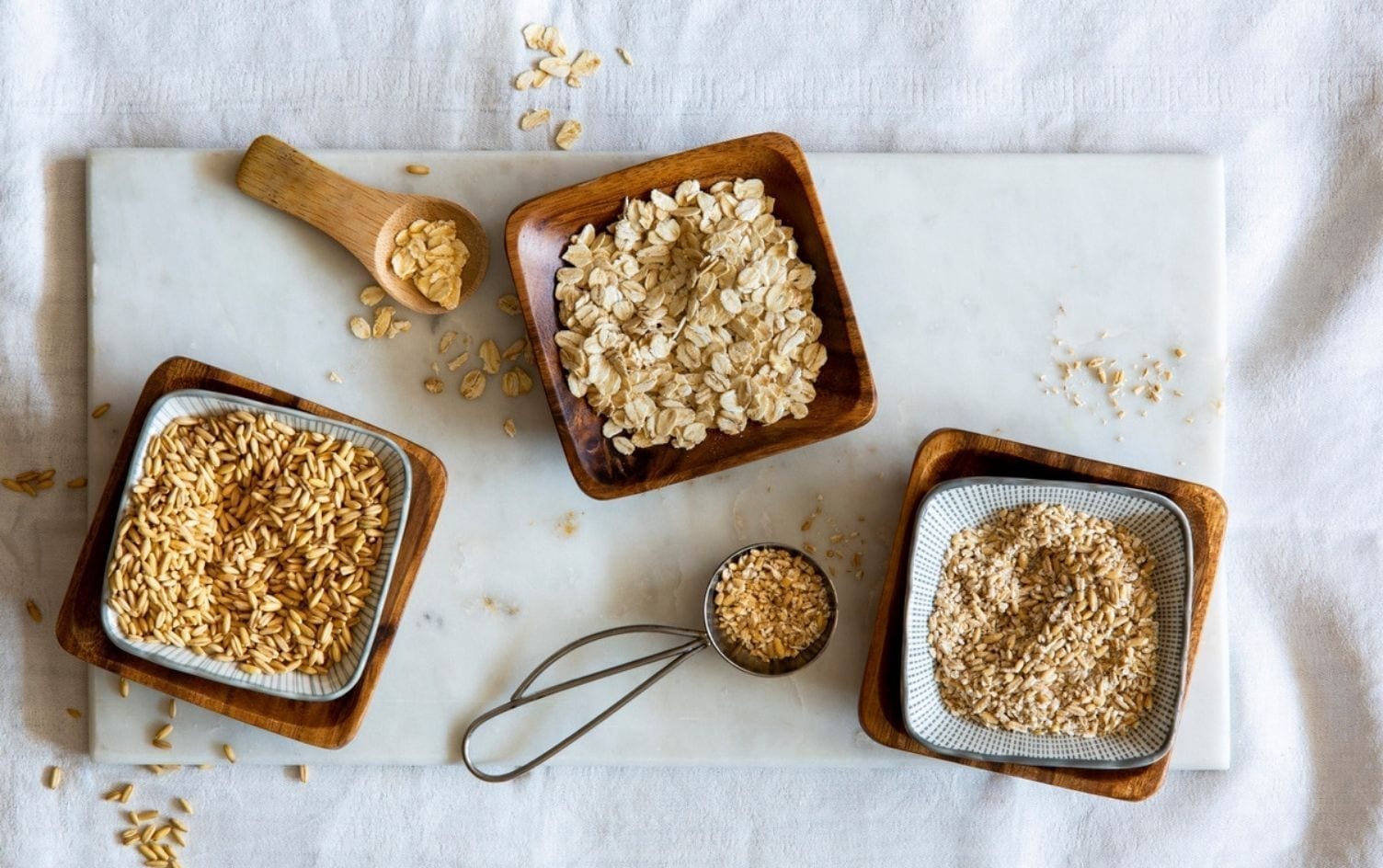Oatmeal probably wins the prize in most people’s minds as the healthiest form of breakfast-in-a-bowl you can have. But, while many of us picture oatmeal in a cozy breakfast bowl, the fiber-rich whole grain is quite versatile. Oats can also provide texture and nutritional properties to other foods such as smoothies, breads, cereals and baked goods.
Nutritionally speaking, oats are high in fiber, protein and several antioxidants and micronutrients, like B vitamins, iron, magnesium, phosphorus and zinc. Their beta-glucan fiber may help to lower cholesterol, while the prebiotic fiber helps diversify your microbiome, or the “good” bacteria in your gastrointestinal system.
Before choosing which oats to consume, it’s important to consider how they’re processed, what you’re cooking, and any time-constraints or texture preferences you might have.
HOW OATS ARE PROCESSED
When understanding some of the key differences between different types of oats, it helps to understand how oats are processed. Through the milling process, oats are cleaned, purified and preserved. Since many hulls (the outer shells) of oats are indigestible, oats are dehulled after they are cleaned.
After oats are dehulled, they are known as “groats.” The groats are then exposed to heat, which helps provide flavor, prevents harmful bacterial growth and extends the shelf life of the whole grain. Once these processes are complete, oats are then processed into the different forms that we know them as today, such as rolled oats, steel-cut oats or instant oats.

ROLLED OATS
To make rolled oats, aka old-fashioned oats, whole groats are softened through steaming, and then flattened on roller flats and steam dried. While they typically have slightly more calories than rolled and instant oats, they also generally provide slightly more fiber and protein (depending on the brand). The thickness of different varieties of rolled oats can vary, but most are completely cooked 10 minutes on the stove or 3 minutes in the microwave and have a soft, creamy texture.
Best used for: Warm breakfast bowls, granola bars, baked goods
STEEL-CUT OATS
To make steel-cut oats, the groats are chopped into smaller pieces and then sliced, rather than flattened like they are for rolled oats. The result is smaller, more compact pieces. They are typically harder and thicker than rolled and instant oats, and therefore take longer to cook, with an average cooking time of 15–30 minutes. This gives them a chewier, heartier texture. They are also slightly lower on the glycemic index and take longer to digest compared to rolled and instant oats, which makes them a good choice for keeping blood sugar levels steady.
Best used for: Overnight oats, porridge, meatloaf, savory congee or to add texture to stuffing
INSTANT OATS
These oats are the most processed of the three varieties and lower in calories, mostly due to a smaller serving size in predetermined bags. Also known as quick oats, they are pre-cooked, dried, rolled and pressed slightly thinner than rolled oats. While they can be ready in just a minute in the microwave, they retain less of their texture and can be mushier compared to rolled or steel-cut oats. This is another reason why steel-cut oats hold up better for soaking overnight compared to instant oats.
Best used for: Quick breakfasts
THE BOTTOM LINE
All three types of oats can be a healthy part of a well-balanced diet and what you choose depends on cooking use and taste preference. If you’re looking for slightly more fiber and a heartier texture, try steel-cut oats. If you prefer a quick, lower calorie breakfast, instant oats might be best for you. Or if you want a creamier texture, go for rolled oats. Depending on the brand, some varieties (especially the instant oats) can have added sugar, so it’s important to read the nutrition labels carefully.
Remember, what you eat with your oats can also make a big nutritional difference, too. For example, it’s a good idea to add a protein source such as nut butter or chia seeds and sweeten with natural sugar from berries (which contain fiber and antioxidants) for a well-rounded meal. If you’re looking for some oatmeal inspiration, try these 12 sweet and savory recipes.
Unlock an experience that’s like having a dietitian, trainer and coach at your fingertips. Sign up for Premium for expert guidance and tools to help you reach your personal health goals.




